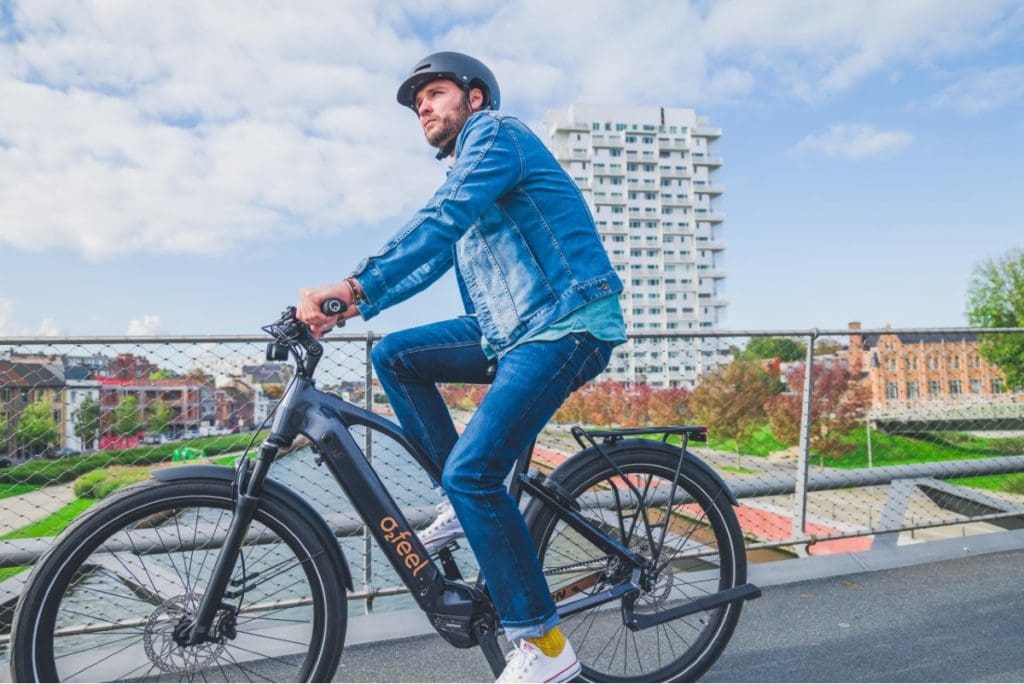How the Stars Aligned for e-Bikes in 2021

Wollongong, NSW
2021 might well have been the most important year in the emergence of e-bikes.
Continued sales growth, escalating technological advancements, corporate investment, infrastructure progress and global recognition of their importance to improve our quality of life all combined in an almost perfect storm for the e-bike industry.
The validity of this assessment will obviously be prone to subjective perspectives on how the success and trajectory of the industry should be measured. Certainly, global supply complications were a substantial hiccup that hampered the industry’s growth and prevented a ‘perfect’ year.
However, there were several landmark events and escalations in trends during 2021 that indicated their boosted prominence and that promised to propel e-bikes well and truly into the mainstream in the next few years.
The global focus on emissions reduction as a result of COP26 and the, albeit 11th-hour, the inclusion of micromobility in the summit’s discussions about transport’s role in tackling climate change, will be helpful in cementing e-bikes as an essential solution.
Weeks earlier, e-bikes were embraced for the first time as part of one of Europe’s most prestigious auto shows, the International Motor Show (IAA) in Munich. The considerable prominence of e-bikes, cargo bikes, light electric vehicles and other micromobility vehicles can only help to break down ‘cars versus bikes’ mentalities and instead highlighted how they can sit side by side as a multimodal solution to the world’s transportation challenges.
The incorporation of e-bikes into IAA was probably inevitable given the increased involvement of automobile manufacturers in the micromobility industry – a trend that seemed to step up a few gears in 2021.
Influx of Car Manufacturers
Their large-scale entry to the industry, including some of the world’s most desirable car brands, will not only influence consumer perspectives of e-bikes and micromobility as cool transport options, the companies’ financial clout and capacity for technological advances should seriously accelerate the evolution of micromobility vehicles.
The marketing muscle and genius of the automotive industry will not hurt either – including the manner in which it has positioned electric automobiles front and centre – and almost the entire stage – as the transport solution to save our planet. If the solution they’re offering also includes e-bikes, it’s highly likely pedal-power will gain more of the spotlight in planet-preserving transportation conversations.
Singling out 2021 as the e-bike industry’s most pivotal calendar year is obviously a very brave call, for an industry that has technically been around for more than 120 years.
American inventor Ogden Bolten Jr was granted the first patent for an e-bike on 31st December 1895, after he invented a battery-powered electric bicycle with a six-pole brush-and-commutator direct current motor mounted in the rear hub.
The second patent came relatively soon afterwards, granted in 1897 to Hosea W. Libbey for an e-bike propelled by a double electric motor inside the crankset axle hub.
Despite further designs patented during that decade, the evolution of e-bikes didn’t gain significant traction for another 100 years, until major companies resumed their interest in electric bicycles.
Yamaha was one of those players. It built a prototype in 1989 and then invented the pedal-assist system four years later.
But while those early periods were cornerstones in developing e-bike technology, 2021 has been unprecedented in all the other factors needed to bring e-bikes’ time in the limelight.
Burgeoning Government Support
The past 12 months have brought a stream of announcements from governments encouraging cycling and micromobility around the world. Paris, Berlin, Milan and other major cities throughout the world have announced colossal infrastructure projects to foster cycling, including inter-district links as e-bikes extend the ranges for many riders.
The Biden Government’s Building Back Stronger framework for the US gained momentum in 2021, including the proposal for 30% subsidies for e-bike purchases. While the legislation’s passage through Congress is under threat, the sheer existence of an e-bike tariff proposal is a breakthrough in one of the world’s more car-centric cultures.
The changing mindset of governments around the world is recognising – and further perpetuating – the boom in cycling participation in recent years, partially fuelled by the COVID pandemic.
The consequent boost in urban cycling infrastructure is also a key factor behind the incredible growth – and projections for even greater acceleration – in urban e-bike sales.
While cargo bikes are grabbing plenty of attention as a major growth area, industry analysts are tipping urban bikes as the industry’s recipient of the ‘most improved’ trophy in the next few years. Net-zero ambitions will motivate many private commuters and funking designs from companies such as Vanmoof, Evari and Urtopia are boosting their street cred.
The past 12 months have also been very kind to cargo bikes, which become almost synonymous with ‘last-mile delivery’ during 2021. Last year continued the roll-out of infrastructure in many cities to support cargo bikes as inner-city delivery options, and governments became increasingly vocal about the potential for cargo bikes to solve problems with traffic congestion, air quality and more efficient delivery services.
If further evidence is needed on the unparalleled importance of 2021 to the e-bike industry, one need only look at the staggering amount of capital being invested, including by key finance players who, until recently, probably wouldn’t have given the bike industry a second glance.
The rapid succession of multi-million-dollar capital ventures and top-end-of-town acquisitions during 2021 were both a confirmation and a turbo charge of the industry’s trajectory.
